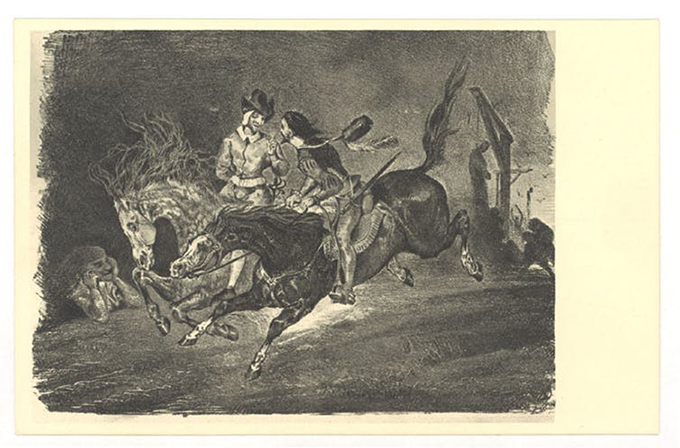
I read San Manuel Bueno, martyr (Miguel de Unamuno, 1931) for the first time when I was fourteen years old. In my list of compulsory books of 2nd of ESO, Unamuno’s reading was after Marianela (Benito Pérez Galdós, 1878) and before La familia de Pascual Duarte (Camilo José Cela, 1942). On the day of the exam, the teacher asked us about the plot of the works to make sure we had read them. So, more than reading the novels, we had to study them .
Because we have to make sure that our teenagers read carefully the masterpieces of Spanish literature (this is what all the regional legislations say, given that the educational competences are transferred). As you can suppose, after a few months neither I nor any of my colleagues remembered absolutely any detail of the books. We had decided, logically, that we did not like to read.
Ten years later, already in the university, another professor returned to submit me to the torture of San Manuel Bueno, martyr . And so the old ghosts of the past woke up (now the martyr was me!). I made a quick transversal reading of the text, a mere procedure to be able to “get rid of it”. The day we discussed the book in class, that teacher used the novel as a basis to explain Christian existentialism and Unamuno’s relationship with Kierkegaard . At that age, we all knew a little more to understand, finally, where the greatness of that work lay. I returned home and read San Manuel Bueno, martyr for the third time. I devoured it . And today is one of my favorite novels.
Experience tells me that the school is a factory of tormented readers. If someone wants to hate literature, all they have to do is stick to that canon since childhood, a canon written and approved by politicians . But where does this approach to literature come from?
The History of Literature as an economic tool
From the Classical Period to the 18th century, the study of Literature was closely related to the study of rhetoric and written expression. But the Enlightenment, with its encyclopedic anxieties, begins to consolidate the concept of corpus , and literature begins to be perceived as a “set of books”. And whenever we study a set, we must draw on representativeness . What concrete works do we have to read to understand and know the whole? In short, the methodology does not seem far-fetched.

The myth of Faust is one of the classic legends of German culture, which Goethe recovered in Romanticism. Wikimedia Commons
But the nineteenth century arrives, the Industrial Revolution arrives and, with it, capitalism and the first globalization. European countries need to position their product to face import threats. And so, the writers realize that they do not have it so easy to sell, that they are now part of the system and that they are alone and unprotected against the new universal market (the feeling of loneliness and the complaining of the romantic writers has to do with more with this than with poetic sensitivity). The price of paper is very low, the publication becomes cheaper and industrial production guarantees large print runs. Suddenly, everyone is a writer. Western protectionist economies panic: what do we do to protect the national product?
Two things, fundamentally.
- First: to favor writers who recover the great national myths and popular folklore. Romanticism in Europe is a basically nationalist movement, which tries to return to the roots of the idiosyncrasies of each country, to exalt certain national values and thus “encourage” the reader to consume the native culture.
- Second: intervene in the study plans. We need our children to understand why our literature is better than the literature of the neighboring country (and even more so if the neighboring country is a colony). Therefore, we will privilege the study of the national history of literature (especially the great classics) and comparative literature over rhetoric, criticism or literary theory. Does it sound like something?
A necessary rethinking
Today we consider normal that Literature classes at the institute level are, in reality, National History classes. Our educational model is an obsolete model that disconnects us from the global reality and that follows, perhaps unconsciously, by publicizing what is ours (our writers, our works … lists, lists, lists …).
What effect does this methodology have on student motivation? Is it necessary to continue privileging national literatures? Should we value other ways of approaching books?
A study revealed in 2017 that 53% of 9-year-old children read daily for pleasure, while at 17 years only 19% do so. Times change, but it seems that the curricula are reluctant to adapt to the new paradigm, which theoretically reign the globality and autonomy of the student.
Perhaps it would be interesting to start wondering really where the origin of our decisions are and whether we should take risks for the sake of future generations, to enrich our cultural horizon. The taste for books is not acquired under any kind of pressure or restriction when choosing readings. It is acquired from freedom (both teachers and students) and from a critical perspective: what are you telling us about literature?
Reading books should never be an end. It should be a means to soak in thought.
Author Bio: David Navarro Martínez is a PhD student in Literary Studies at the Universidad Complutense de Madrid
Reviser: Carmen M. Méndez García is a Professor of North American Literature at the Universidad Complutense de Madrid